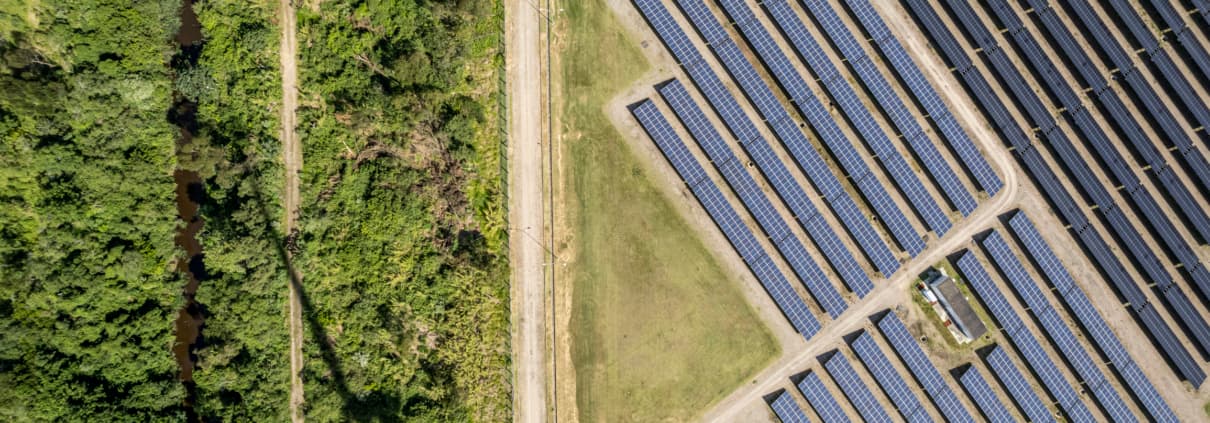How I-RECs can offer a new level of transparency as companies get real on climate change

As a growing number of companies around the world publish commitments to reduce their greenhouse-gas emissions in order to reach net zero, the pressure is on to ensure they live up to their claims. International Renewable Energy Certificates (I-RECs) can provide a certifiable way of proving corporate action to slash scope 2 emissions. Atlas Renewable Energy explains how.
Investor and regulatory scrutiny of climate risk is rising, and consumers and employees are increasingly factoring sustainability into their decisions. It’s no longer good enough to make ambiguous commitments. Indeed, proposed changes to the US’s Securities and Exchange Commission’s rules on reporting risk will mean that companies will need to provide detailed reporting of their climate-related risks, emissions, and net-zero transition plans. Similar measures are also underway in the European Union, Hong Kong, Japan, New Zealand, and the United Kingdom.
Among the proposed rules are better reporting of Scope 2 emissions, which are emissions generated by the energy a company consumes. Nearly 40% of the world’s greenhouse gas emissions can be traced to energy generation, which means taking action to reduce Scope 2 emissions is vitally important to limit global temperature rises.
Achieving this means tackling the carbon footprint of electricity use. While energy conservation measures and efficiency upgrades represent low-hanging fruit that companies can take advantage of to start slashing emissions, the real action comes from switching to clean electricity. By using and producing renewable energy, companies can take real action on climate change and meet increasingly stringent expectations from investors, regulators, and consumers.
However, many businesses are still unable to source renewable energy directly.
For example, this could be due to the small size of energy demand at a company’s numerous small, scattered facilities, which make it more challenging to execute contracted purchases. It could be a result of a lack of availability of renewable energy in countries in which the company has facilities, or it could be due to the type of electricity market or regulations in the location where the company operates.
While all markets will develop eventually, companies need a solution now.
In locations with limited or no opportunity to procure economically priced, commercial quantities of renewable electricity, and when a company has reached the limit of the energy demand reduction and renewable energy production it can achieve, the purchase of energy attribute certificates (EAC) enables them to cover the last mile towards 100% renewable energy. This allows them to reduce Scope 2 emissions, claim environmental attributes of renewable electricity, and meet sustainability commitments and goals.
The types of EACs available in each market differ, but for most of Atlas’s customers, the I-REC scheme is the most relevant.
The I-REC Standard is an internationally recognized method for electricity attribute allocation. Each I-REC represents the unique ownership of 1 MWh of renewable energy that has been produced and injected into the grid.
But for I-REC purchases to contribute to meeting scope 2 emission reduction goals, it’s vital to use them correctly.
The role of EACs in reporting against scope 2 emissions has been brought into question recently, following a study published in Nature Climate Change by a team of researchers, who found that some companies’ environmental claims were exaggerated because the amount of energy reported on the certificates was not always equal to what they were publicly stating.
In response, the Science Based Targets Initiative (SBTi), a partnership between CDP, the United Nations Global Compact, World Resources Institute (WRI), and the World Wide Fund for Nature (WWF), encourages the use of EACs based on the Greenhouse Gas Protocol’s (GHGP) scope 2 guidance, has highlighted the need for boosting transparency about how companies meet their targets.
I-RECs serve to increase the transparency of the energy sector and provide clarity about the use of renewable electricity among end-consumers. The I-REC Standard ensures that issued certificates adhere to major international sustainability and carbon accountability standards, including the GHGP, CDP, and RE100, and adhere to stakeholder expectations of industry best practices.
But for them to make a difference under the GHG Protocol Scope 2 guidance, they need to impact emissions properly. The GHG guidance is clear on this; when it comes to reporting Scope 2 emissions, there is a ‘location-based’ approach that reflects the average emissions intensity of the local grids on which energy consumption occurs and a ‘market-based’ approach that reflects emissions from electricity generation that companies have purposefully chosen, enabling businesses to use their purchasing power to accelerate the deployment of renewable energy.
What this means is that companies should purchase I-RECs from generation sites located within the same energy market jurisdiction as their energy usage.
What’s also extremely important is third-party verification. It isn’t enough anymore to simply make unsubstantiated claims. Bringing in external bodies helps ensure that an I-REC system is being used correctly and that a company’s claims about the energy they use are reliable. To make their claims credible, companies should have a third party verify their redemptions and verify that the correct number and type of I-RECs have been redeemed.
By using I-RECs correctly, companies can not only make a conscious, transparent and evidence-based choice to lower their scope 2 emissions, but they can also enable the development of more renewable electricity installations.
Companies are responsible for addressing their Scope 2 emissions in a way aligned with the current climate science. While this can be complex, with the proper guidance, it can be achieved. To find out more about how to develop a balanced strategy that ensures a real impact and avoids greenwashing, contact Atlas Renewable Energy today.
In partnership with Castleberry Media, we are committed to taking care of our planet, therefore, this content is responsible with the environment.
Share This Entry

